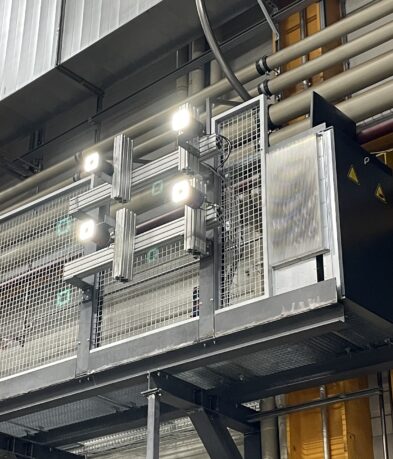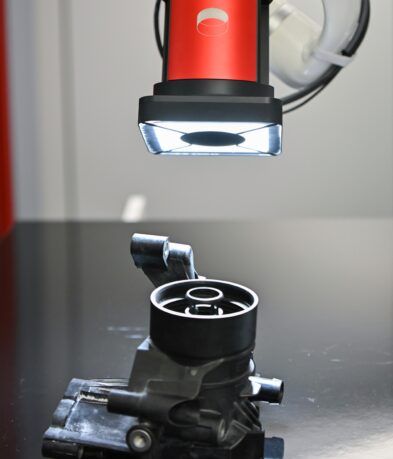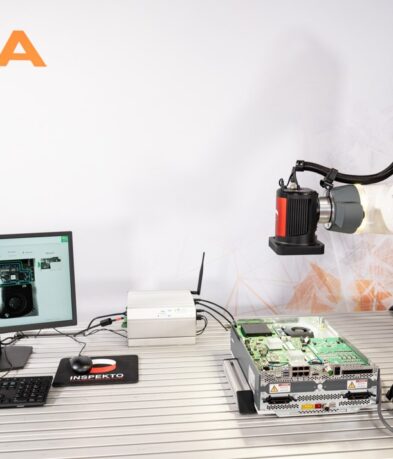CHALLENGING MACHINE VISION MISCONCEPTIONS
December 09, 2018
The truth about machine vision technology
The floppy disk was once the cutting edge of storage, its design slowly decreasing in size as technology progressed. Over nearly 40 years of popularity the common expectation was that the next step in storage would, again, be an even smaller floppy disk. But technological advances were to reshape the future of storage with an entirely new approach, that broke a variety of misconceptions that existed about data storage. Here, Harel Boren, CEO of Inspekto, the founder of Autonomous Machine Vision, explains the truth behind some common machine vision misconceptions.
The introduction of the USB drive led to the eventual decline of the floppy disk, which is now banished to the history books of storage. As the machine vision industry goes on to embrace Autonomous Machine Vision, misconceptions remain.
“Cost limits what’s possible”
Installing a machine vision solution is viewed as an expensive process. This is because traditional machine vision solutions require a major effort and continuous investment on top of upfront costs. Installing and maintaining a traditional solution is a complex process that requires expertise. The combined cost of these professional services with cameras, lenses, lighting and more, turn traditional solutions into an expensive business ─ in the region of €20,000 to €150,000 or more, per inspection point.
Because these solutions are tailored to a particular point in the production line, they are also inflexible, made to work for only one product at one point on one production line. This means adding additional quality assurance points to the line can cause costs to spiral.
None of this is true with Autonomous Machine Vision, where a system is standalone, simple and quick to setup ─ making it affordable. In fact, an Autonomous Machine Vision system should typically be installed at 1/10th of the cost and at up to 1,000 times the speed of planning and installing a traditional solution. Thanks to speed and affordability, it can be installed at any stage of the production line – and moved to a new location in minutes when required.
“A systems integrator is essential”
Because traditional machine vision is a complex process, there is a misconception that the industry will always rely on the expertise of a systems integrator. The machine vision ecosystem has for many years aligned itself to the systems integrator, the only party equipped with the expertise needed to build a solution. Once the solution is installed, a systems integrator is required for every set up and changeover on the production line.
In the age of Autonomous Machine Vision, systems integrators are no longer required. The manufacturer can install a visual quality assurance (QA) system out of the box in minutes. Because Autonomous Machine Vision systems can self-set and self-adjust, the manufacturer is able to do this independently at any point on the production line. Just like the floppy disk, the systems integrator becomes obsolete.
“Machine vision will never be plug and play”
Since the 1980s, manufacturers have used machine vision technology for quality assurance. The process has always involved building a tailored solution, piecing together the right filters, lenses, lighting and cameras. Over weeks or even months, the integrator must continue setting proof of concepts (POC), testing plans, programming and more – leaving plug and play visual QA as a far-fetched dream. As written by Fred Grootentraast from ICT Group in a 2016 article titled Machine vision is not plug and play, “The success of machine vision is dependent on the use of the right hardware and software and this requires specialised knowledge of both disciplines.”
Though this was once true, Autonomous Machine Vision now brings the capability to simply Plug and InspectTM. New technology, such as Inspekto’s S70 system, mean that in 30 minutes, any member of staff could install a system and start performing effective visual QA.
Just as the next step in storage was not a smaller floppy disk, but an entirely new approach, Autonomous Machine Vision is a new era in visual QA. For further information visit www.inspekto.com.


